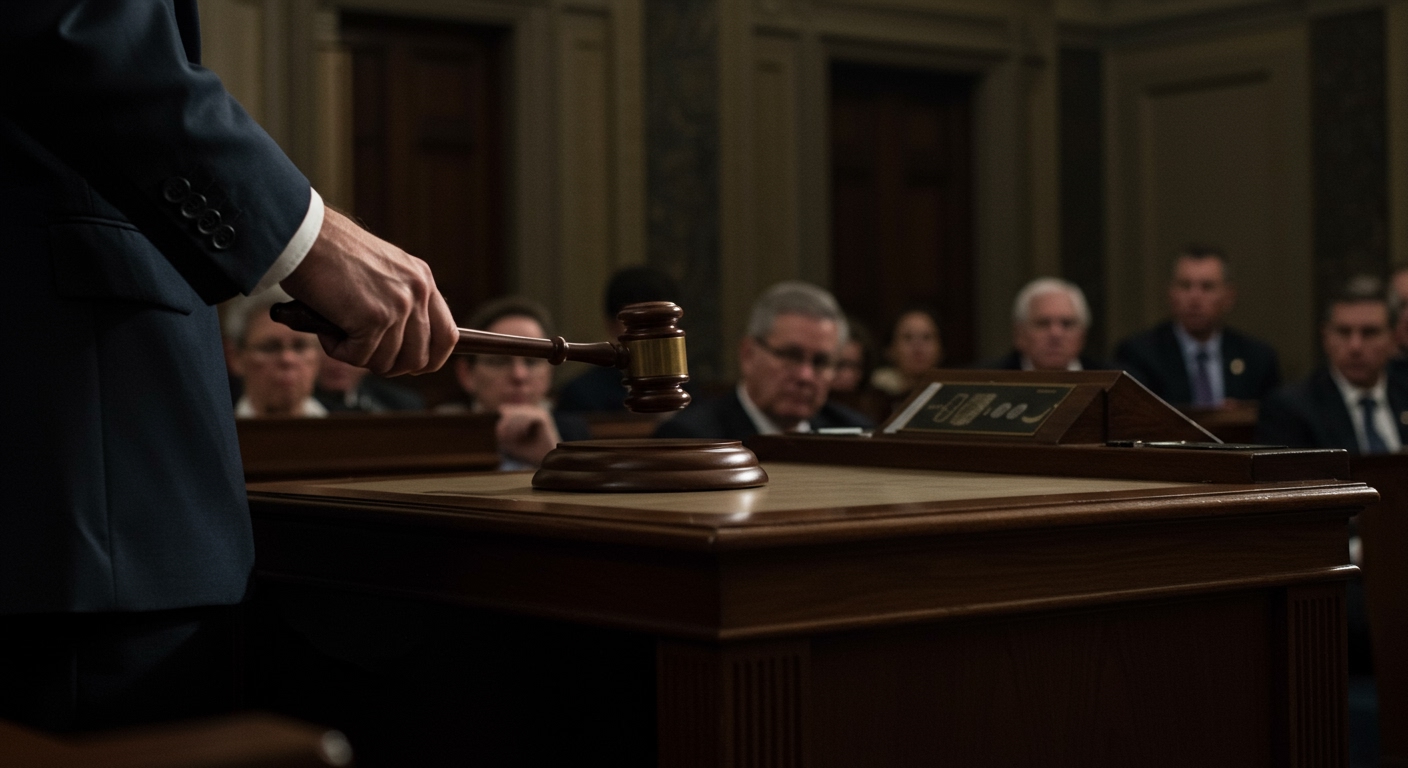President Donald Trump chose the nation’s 249th anniversary of independence, July 4, 2025, as the moment to sign into law a controversial and sweeping budget and tax bill. Describing it as the single most significant legislative accomplishment of his second term, the signing ceremony thrust the comprehensive measure into the national spotlight, immediately solidifying its status as a major flashpoint in the ongoing political discourse surrounding fiscal policy, social programs, and immigration.
Ambitious Allocations and Comprehensive Policy Shifts
The core of the newly enacted law lies in its ambitious and ideologically charged policy shifts and financial allocations. A substantial $45 billion has been appropriated specifically for the construction of physical barriers along the nation’s border – a project that has been a defining issue throughout President Trump’s political career. An equivalent sum, another $45 billion, is allocated for the expansion and operational costs of detention facilities, reflecting a significant investment in immigration enforcement infrastructure. Beyond border security, the bill extends a package of tax cuts that were initially enacted in previous years. These extensions have broad implications for both individual taxpayers and corporate entities, influencing tax liabilities and investment incentives. In a move presented by the administration as a direct benefit to working Americans, the legislation creates specific new deductions applicable to income earned from social security benefits, compensation for overtime work, and tips received. These provisions aim to provide targeted tax relief to certain income streams. However, balancing these measures, the law also mandates reductions in funding and stricter eligibility criteria for various welfare programs, affecting crucial social safety nets designed to support low-income and vulnerable populations.
The Administration’s Economic Rationale and Lofty Promises
President Trump framed the signing as a pivotal step towards unleashing unprecedented economic prosperity. He articulated a clear belief that the bill’s provisions would serve as a powerful engine for stimulating significant economic growth nationwide. The administration’s economic rationale centers on the idea that extending tax cuts will spur business investment and job creation, while the new deductions for social security income, overtime, and tips are designed to provide tangible financial relief and encouragement for those actively participating in the workforce. During the signing event and in subsequent remarks, President Trump reiterated his confidence that these policies would translate into a stronger economy, increased wages, and improved living standards for average Americans.
Deep Partisan Divide and Strategic Opposition
The legislative journey of the bill starkly illustrated the deep political chasm dividing Washington. The measure passed Congress strictly along party lines, failing to garner a single vote from Democratic lawmakers. This complete absence of bipartisan support underscores the fundamental disagreements regarding the bill’s priorities and potential impacts. Opposition leaders have been swift and vocal in their condemnation, focusing particularly on the cuts to welfare programs. Democratic lawmakers have made it unequivocally clear that the changes impacting vital programs like Medicaid, which provides health coverage to millions of low-income Americans, and the Supplemental Nutrition Assistance Program (SNAP), a crucial food assistance program, will be central to their campaign platforms. They plan to highlight the human cost of these cuts, arguing that they disproportionately harm vulnerable families and individuals, making this a defining issue in the run-up to the 2026 midterm elections.
A National Holiday Signing Ceremony
The decision to sign the bill on Independence Day, July 4, 2025, was a politically charged choice aimed at linking the legislation to themes of national pride and economic independence. The ceremony itself was utilized as a public relations opportunity, featuring elements designed to underscore the administration’s view of the bill’s significance and national importance. Reports indicate the event included a military flyover, an element often associated with major national celebrations, further elevating the profile of the signing and associating it with patriotic symbolism.
Looking Ahead: Campaign Fodder and Policy Battles
The enactment of this expansive budget and tax bill represents a significant legislative victory for the Trump administration, but it simultaneously ignites a new phase of intense political contention. With billions allocated for border security, broad tax extensions, targeted deductions, and cuts to social safety nets, the law touches upon some of the most debated issues in contemporary American politics. While the administration celebrates the signing as a landmark achievement promising economic benefits, the opposition is already mobilizing, framing the bill as a harmful assault on essential support systems. The explicit strategy by Democrats to make the impact on programs like Medicaid and SNAP a centerpiece of their 2026 midterm campaigns ensures that this controversial legislation will remain at the forefront of national political debate for the foreseeable future, setting the stage for heated electoral and policy battles.














